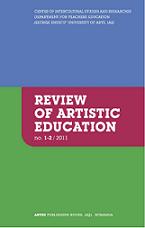HOW TO READ THE LOUISE BOURGEOIS’ WORK FROM THE PERFORMATIVITY?
HOW TO READ THE LOUISE BOURGEOIS’ WORK FROM THE PERFORMATIVITY?
Author(s): Eva Santos Sánchez-GuzmánSubject(s): Education
Published by: Editura ARTES
Keywords: performance; subjectivity; transitional objects; fetishist
Summary/Abstract: Performances by Louise Bourgeois are scarce yet, the story of her life related through her works and the relationship of the two, as described in the texts, will allow us an overview of her career as a highly subjective performing action. Through her work she gives names to her fears and traumas so to describe her work as autobiographical is to fall short of the meaning her creation. This approach would suppose a reflection through the example of Louise Bourgeois on the question: Is it the subjectivity of the artist which comes out or is represented in the performance or does the performance contribute to shape the artist’s subjectivity?. This I will do through commentary of four works-actions. Les Personages, which followed her from one place to another until finally going on show in the New York Peridot Gallery in 1949 and 50, are a reflection of her abandoning the family home and creating thereby what the psychoanalyst Donald Winnicott called, “transitional objects” pain order to develop her migratory grief. The Destruction of the Father, may be seen as a cathartic installation in which the self debates in a search for the psychic spaces in which to place her father (she would do the same with her mother in later works), a search for the structures which can house him, and entering “transitional spaces” where new objects are recreated and symbolic killings are played out, with the recognition of her self in her work: “I have no ego, I am my work”. It is a symbolic killing of the enemy, for which she will later have to perform a ceremony of expiation and purification in the style of the rites laid out by Freud in Totem and taboo. We are talking here of the performance Banquet/A fashion show of Body Parts, in 1978, where faced with a similar scenario to that of The Destruction of the Father she invites a series of art critics to try on a latex suit of many bosems, thus mocking the patriarchal society. There are two possible readings of the great phallic work Fillette (1968-99): a criticism of phallocentrism or a representation of the failure of a mother’s power in the relationship with her father. A failure which she does not wish to repeat and so she dominates it by staging it. When the photographer Mapplethorpe proposes taking her portrait she takes her penis with her , so converting herself into a phallic mother. Bourgeois’s work consciously poses the relationship of the self with the world, a world which goes beyond the world, a world which extends to the reflection of complex human relationships which finally structure our subjectivity.
Journal: Review of Artistic Education
- Issue Year: 2012
- Issue No: 03+04
- Page Range: 152-161
- Page Count: 10
- Language: English
- Content File-PDF

